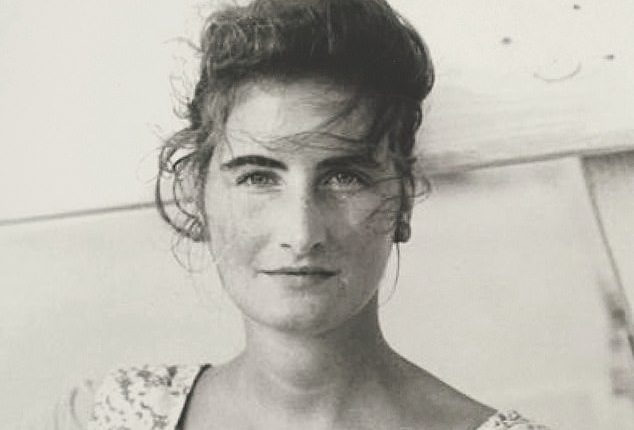A man who had been identified as a suspect in the killing of one of the many women who went missing in Ireland’s so called ‘Vanishing Triangle’ 32 years ago has now been arrested and released without charge after questioning – as the baffling mystery remains unsolved.
New Yorker Annie McCarrick was last seen taking a bus to Enniskerry on March 26, 1993, after telling a friend she planned to go to the Wicklow Mountains for the day.
The 27-year-old, who had just moved over from the US that year, was the first of eight women who would go on to disappear in the local area over the next five years.
In 2023, the Gardaí upgraded her case into a murder inquiry after receiving an undisclosed new lead.
Last week, a man in his 60s, who reportedly knew Annie well, was arrested on suspicion of her murder; but was released after 24-hours of questioning without charge.
The businessman, who lives with his wife, denied any involvement in the disappearance. His status was only upgraded to official suspect in the last two years.
The arrest was the first made in the case and came after officials took a statement from a ‘close associate’ of the suspect. The associate remains ‘of interest’ to the overall investigation, according to The Irish Independent.
Gardaí reportedly believe the two men were together on the weekend Annie went missing and there are now questions over their alibi.

Annie McCarrick, who was originally from New York, went missing on March 26, 1993. She was last seen taking a bus to Enniskerry after telling a friend she planned to go to the Wicklow Mountains for the day. (undated photo of Annie before her disappearance)
The Irish Sun also revealed police seized a number of electronic devices, including laptops and phones, at the suspect’s home on Thursday morning.
Officers cordoned off and searched a house in Clondalkin, southwest Dublin, as part of the murder inquiry. The current occupants of the house have no connection to the case.
Gardaí brought a cadaver dog, who is trained to detect signs of human remains, into the search at the rear of the property where excavation work had taken place.
The man who was arrested for questioning was flagged to officers as a possible suspect immediately after the New Yorker’s disappearance in 1993.
Annie’s friends claimed they were concerned about the man as she had told them she felt ‘pressured and harassed’ by him – and claimed he had hit her on one occasion.
They alleged he became fixated on the belief that Annie was involved with a man who was well-known to him and he became jealous.
However, they believed that the information they provided was mishandled and not adequately considered during the initial inquiry.
According to The Irish Sun, Gardaí are planning to re-interview former colleagues of the businessman after concerns were raised about his alibi on the day Annie went missing.

Gardaí remove a skip at a house in Clondalkin, where they are continuing their search in the investigation into the death of American woman, Annie McCarrick

Detective Superintendent Eddie Carroll said investigators were looking for the bag Annie was seen wearing in this CCTV image. The last known CCTV footage of Annie, it shows the missing woman queuing in the Allied Irish Bank on Sandymount Road shortly before 11am on the morning of her disappearance

Gardaí brought a cadaver dog, who is trained to detect signs of human remains, into the search at the rear of the property where excavation work had taken place
A source told the publication: ‘Any evidence at the moment is just circumstantial.
‘One strand is that one of the suspect’s former colleagues had concerns about his lack of empathy after Annie’s disappearance.
‘This person made it clear that the suspect didn’t appear to be too grief stricken considering how much he was obsessed with Annie.’
The investigation had previously worked on the theory that the last sighting of Annie was at a Glencullen pub called Johnny Fox.
In 2023, a source told the Irish Mirror: ‘Some significant information has come forward which has seen the case being upgraded from a missing persons case to a murder.
‘In 2018, the case of Deirdre Jacobs was upgraded to murder and searches of land took place after that in October 2021.
‘The same could happen soon in Annie’s case. They have already earmarked certain areas of interest which they want to look at.’
During a press conference, Detective Superintendent Eddie Carroll revealed that investigators are keen to find find a handbag Annie was seen carrying in CCTV footage captured shortly before her disappearance.

Annie McCarrick was born in Long Island but moved to Ireland in 1987 and began studying in Dublin

The Gardaí upgraded its investigation into the disappearance of Annie McCarrick (pictured) from missing person investigation into a murder inquiry in 2023
The last known CCTV footage of Annie shows the missing woman queuing in the Allied Irish Bank on Sandymount Road shortly before 11am on the morning of her disappearance.
In the clip, can be seen wearing a longline coat and her leather bag is hanging off one shoulder.
Because the bag was never found, investigators believe the unknown assailant may have chosen to keep the item.
Detective Superintendent Eddie Carroll urged people who may know anything about the whereabouts of Annie’s bag to speak with officers.
‘I am appealing to those persons, 30 years later, to please come forward and speak to the investigation team,’ he said during the conference.
‘I want to speak with any person who has any information on the large brown handbag which it is believed that Annie was in possession of when she went missing.’
He also urged anyone who had spoken to, or had any interaction with Annie around the time of her disappearance to come forward.
‘I want to speak to any person who met, spoke with or had any interaction with Annie McCarrick on the 26th March 1993 or subsequently,’ he said.

Detective Superintendent Eddie Carroll (pictured while speaking to the media at Irishtown Garda Station in 2023) has urged anyone with any information about the case to come forward
‘There is a person or persons, who have information on the disappearance of Annie McCarrick and her murder on or about the 26th March 1993 and who haven’t yet spoken to Gardaí or who may have already spoken to Gardaí but were not in a position to tell everything that they know at that time.’
Annie McCarrick was born in Long Island but moved to Ireland in 1987 and began studying in Dublin.
She went back to America in 1990 to get a master’s degree, but returned to Ireland in January 1993 to settle.
During an interview in 2016, her mother Nancy told RTÉ’s Crimecall programme: ‘When she found Ireland, her whole life really changed.’
On March 26 1993, Annie left her apartment in Dublin to spend the day at Wicklow Mountains, going alone after inviting a friend to go with her.
After she was spotted that afternoon getting the bus to Glencullen, there was an alleged sighting of someone matching her description at Johnnie Fox’s Pub.
The woman spoke with a man who was in his twenties and wearing a waxed jacket. He has never been identified.
After the alleged sighting at the pub, Annie was never heard or seen again, with many people believing she had been murdered – but the case has never been solved.
The alarm was raised when Annie did not show up at a part-time café job the following day to collect her wages, and failed to go to a dinner party.
In July 2020, Michael Griffith, a lawyer her father John hired in 1993, now joined forces with Kenneth Strange, a former FBI agent, and Annie’s uncle, John Covell, as well as an Irish private investigator, Brian McCarthy, to try to solve the mystery of what happened to Annie.
The American team came up with the theory that Annie was not at Johnnie Fox’s Pub, in the village of Glencullen, as previously believed.
Instead, they have identified a new ‘prime suspect’ after becoming aware of a witness statement given to Gardaí in 1993.
Mr McCarthy said they had identified a new suspect whom they think Annie was with in a café in Enniskerry.
The witness, who has since died, alleged that Annie had been in the café with a man who fit the description of a suspect McCarthy has identified. Mr McCarthy called the sighting ‘more crucial than initially thought’.
There have been several attempts to uncover the person behind Annie’s disappearance.
Gardaí have carried out extensive investigations into the disappearances but so far have had no breakthrough in solving them.
In 2008, the Garda brought a team of FBI agents to Ireland to review the evidence they had accumulated.
These experienced profilers, who specialise in investigating serial killers in the United States, concluded that the unknown killer matched the profile of one Larry Murphy, who was jailed for the rape and attempted murder of a young woman in Carlow in 2001.
Murphy had kidnapped the woman, put her in the boot of his car and taken her to the Wicklow Mountains where she was repeatedly raped.
He then tried to strangle the victim to death but two hunters happened upon the scene, saved the woman, and helped identify Murphy as the attacker, leading to his arrest.
Murphy has been questioned over the Vanishing Triangle cases but has always denied being connected with any of them.
Meanwhile in 2014, retired detective sergeant Alan Bailey claimed that a member of the Provisional IRA may have killed Annie.
At the time, he told RTÉ’s Today with Sean O’Rourke programme that the American student met the IRA man, to whom he gave a fictional name Manus Dunne, at Johnnie Fox’s pub in Glencullen in the Dublin mountains.
Mr Bailey said that he ‘started bragging about different exploits’, naming colleagues before ‘realising the enormity of what he had done’.
The retired detective sergeant wrote that Manus offered a lift into town but ‘drove her up the mountains where he killed her and concealed her body behind some bushes’.
He said the information from a ‘very reliable source’, was a story that ‘needs to be checked out’.
Meanwhile in 2018, police in Ireland began investigating whether a married father-of-two shot dead after murdering a student had been involved in Annie’s killing.
Mark Hennessy, 40, was killed by officers hunting for missing Jastine Valdez, 24, near Dublin in 2023 before her body was discovered.
Garda sources told the Irish Times that Hennessy’s DNA profile would be checked against historic and recent disappearances to see if he was a serial killer.
As part of that review, officers reexamined the infamous Vanishing Triangle cases of the 1990s, where a series of young women disappeared without trace over the course of five years, to see if Hennnessy could be responsible.
The victims include Annie McCarrick alongside Fiona Pender, Deirdre Jacob, Jo Jo Dullard, Fiona Sinnott, Eva Brennan and Ciara Breen.
Hennessy would have been aged just 16 when Annie disappeared in 1993, but her case is still being included in the review.
Former detective Alan Bailey, who investigated Annie’s disappearance 30 years ago, has said that his ‘one regret’ is that he was never able to find out what happened to Annie and the other ‘Vanishing Triangle’ victims.
What’s more, the former detective said he is confident that Annie’s murderer is still at large.
He now believes the investigating team should speak with Murphy.
The former detective claims he tried to interview Murphy while he was a prisoner at Arbour Hill – but the criminal refused.
At the time, Bailey says they had to respect his decision not to be questioned – whereas officers are now able to get a court warrant to speak with prisoners.
However, it has since been reported that Murphy did speak with officers as part of the ongoing ‘Vanishing Triangle’ investigations.
In 2005, Murphy emerged as a ‘person of interest’ in the investigation into the murder of Deirdre Jacob.
The 20-year-old, who had been studying in Twickenham, London, vanished outside of a post office – just yards from her parents house in Newbridge in 1998.
In 2010, the Irish Mail on Sunday revealed that Murphy had been doing work for Deirdre’s grandmother in her sweetshop at the time the 18-year-old vanished from Newbridge, Co. Kildare.
Garda sources revealed Murphy was carrying out carpentry work at the shop, which Deirdre visited just hours before she went missing.
In August 2010, Murphy was released from prison after serving 10 of his 15 year jail sentence.







